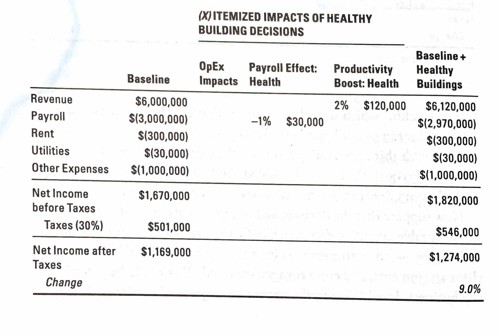This (and much more) is the focus of a new book written by two leading experts from Harvard University: Healthy Buildings: How Indoor Spaces Drive Performance and Productivity.
Making the Case for Healthy Buildings:
Harvard researchers look at thermal health, sound and the foundations of what makes building “healthy” in a new book
Have you ever grown tired during a meeting only to feel suddenly refreshed the minute someone opens the door? The absence of fresh air in a room is just one of the many factors impacting the way people feel and perform in the buildings where they live, work and play.
This (and much more) is the focus of a new book written by two leading experts from Harvard University. Healthy Buildings: How Indoor Spaces Drive Performance and Productivity explores impact of building systems on the people who occupy them and makes the business case for investing in “healthier” systems.
The fact that humans spend approximately 90 percent of their time indoors is a well accepted statistic. So it’s no surprise that more organizations are looking to improve the way their buildings are constructed. From occupant health to productivity and performance, a “healthy” building can have many benefits.

A look at the financial impact of productivity gains achieve through healthy building initiatives.
As they make the case for creating healthy buildings, authors Joseph Allen and John Macomber look to Google. The “secret sauce” of what makes Google such a successful company is their focus on recruiting and retaining “smart creatives” and developing an “environment where they can succeed at scale.”
Google cofounder, Larry Page, was known to carry a particle counter that measured air quality in the building. Clearly, building systems are a top priority at Google.
“For Google real estate teams, buildings are the product and the people in them are our users. Our goal is to build sustainability in from start to finish, prioritizing our planet and the health and wellbeing of future occupants,” said Google chief sustainability officer, Kate Brandt. (If you’re interested in learning more about Google’s heating and cooling solutions, click here to talk to Cyrus.)
At Google, the cost of building healthy and sustainably is part of their ethos. Yet as the authors go on to show, the upfront costs they may incur have longterm dividends. From increased marketability, lower energy costs, improved employee performance, the return on the investment of building healthy is exponential and worthy of close examination.
The Foundations of a Healthy Building
“May you have a strong foundation when the winds shift… and may you be forever young.” —Bob Dylan
To create a healthy building, the authors identify nine primary foundations. This includes:
1. Ventilation
2. Air Quality
3. Thermal Health
4. Moisture
5. Dusts & Pests
6. Safety & Security
7. Water Quality
8. Noise
9. Lighting and Views
As indoor climate designers, we focus primarily on solutions that meet thermal health needs, but also cover ventilation, noise and views. We won’t get into specifics for every foundation, but we facts and statistics included in the book that may be of interest:
• A study performed at Harvard showed that for every 2*F variation from the optimal temperature, there was a 1 percent reduction in throughput of students (e.g. productivity, performance).
• Researchers at Lawrence Berkeley National Laboratory found a 10 percent relative reduction in performance when temperature falls out of the optimal range.
• A 4 degree fluctuation from your building’s optimal temperature can lead to a 9 percent decline in the bottom line of a business.
• A study of 500 primary school aged-children in France showed that standardized test scores were 5.5 points lower for each 10 dB increase in noise level over the average noise level of 50 dB.
• White noise generated by mechanical systems can make it difficult for teachers to speak and for students to hear.
• Biophilic design is “an attempt to bring some nature into our indoor life, thereby bridging the gap between our genetic disposition and the realities of our modern world.”
• A study looked at two sets of patients on the same floor recovering from a surgery. Half of the patients looked at a brick wall and the other half had views of nature outside their window. “The results were staggering: patients with rooms facing out to nature used less medication and had quicker recoveries.”
• Authors recommend maximizing access to daylight and windows, and bringing nature indoors by incorporating elements of biophilic design. Knockonwood, anyone?
Time to Focus on the 90 Percent
The authors make a great case for investing in building health. Their central question: “Why are we ignoring the 90 percent?”
As business evolves, competition for top talent will become increasingly fierce. Salaries, healthcare and overhead expenses make up the lion’s share of the budget, so focusing on the systems and resources that offer peak performance will become mainstream sooner than later.
However, it’s also important to look beyond the four walls and see the potential for global change. With almost 2 billion additional people joining us on earth by 2050, the majority of whom will live in urban areas, the authors implore, “buildings need to be part of the solution to our sustainable development challenges.”
Building with the health of building occupants in mind is a “win for all” they say: employees, building investors, owners, developers and the rest of us (society).
Check out Healthy Buildings: How Indoor Spaces Drive Performance and Productivity on Amazon.


